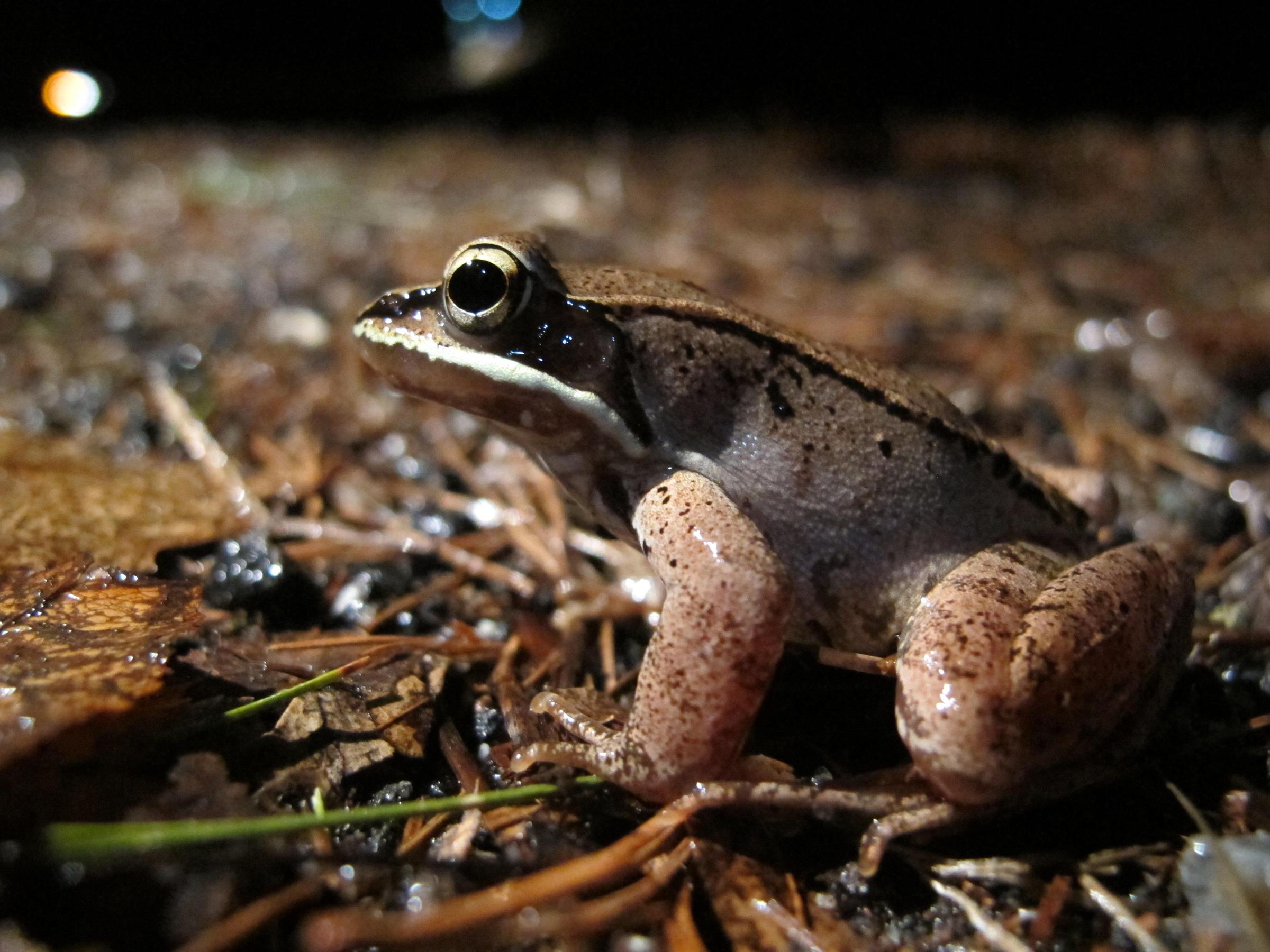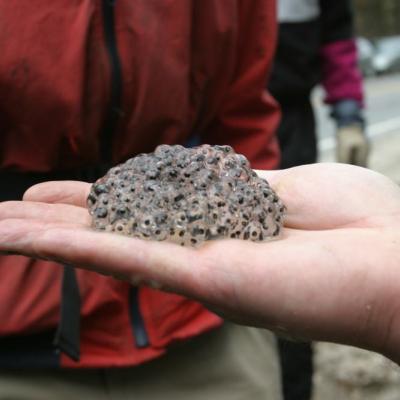- Tags:
- Wildlife,
- Something Wild

The "Big Night" follows thawing-out. Photo Ashuelot Valley Environmental Observatory via Flickr
The North American Wood Frog has developed an impressive strategy for surviving cold New England winters. It doesn't seek warmth as other animals do. The wood frog goes with the cold and actually freeze in the winter months. Come spring, it thaws out, ready for mating season.
How does it do that? We don't really know. While we don't know exactly how it all works (yet) we can see what's going on inside the frog. It all starts at the first sign of ice. When the frog touches an ice crystal its body is signaled that winter has arrived and its time to go into freeze-mode. It will bury itself under leaves and mud as this biochemical feature is triggered. Water inside the frog is pushed away from the center - away from the organs - and all that surrounding water turns to ice. The frog slowly stops breathing, its heart stops beating, and it stays that way all winter long.
How does a frog survive this process, let alone wake up in the spring without tissue damage? Here's where things get really cool: the North American wood frog produces antifreeze within its body. Much like the stuff you put in your car, the frog's antifreeze lowers its freezing point. Water typically freezes at 32 degrees Fahrenheit. Mixing in some antifreeze will lower the waters freezing point to, say, -32 degrees (depending on how much antifreeze is added). That's basically what the wood frog does. When it touched the first ice of the season its body knew to start the winterization process. That starts with producing a lot of urine and storing it in the blood. Meanwhile the liver produces glucose (sugar). The sugar mixed with the urine creates antifreeze within the cells. Then the frog enters a state of suspended animation.

Come spring, the frog begins to wake up. It takes about a day to thaw out, starting with the insides, then the use of its limbs returns. Then it's back to normal for the frog. After a long overdue bathroom break, the frog makes its way to its natal vernal pool.
This process is not without its flaws. The frog is only inches below ground and vulnerable to predators who might be scrounging around for food. But no strategy is without risk and the advantages are compelling. Other than being super cool, the wood frog is positioned to be the first amphibian to get back to doing what it does come spring. What's so great about being first? Breeding earlier in the season means avoiding predators who sleep in late.

If you listen for the peepers this season, you'll know when the wood frogs are on the move. It will be a rainy night and those peepers will be perched atop blades of grass, singing their familiar song, while the frogs make their way to the pond.
Check out this cool (cold?) You-Tube video about these fascinating frogs featuring a voice familiar to public radio fans. It's Radiolab's Robert Krulwich.
https://www.youtube.com/watch?v=Fjr3A_kfspM#t=27
